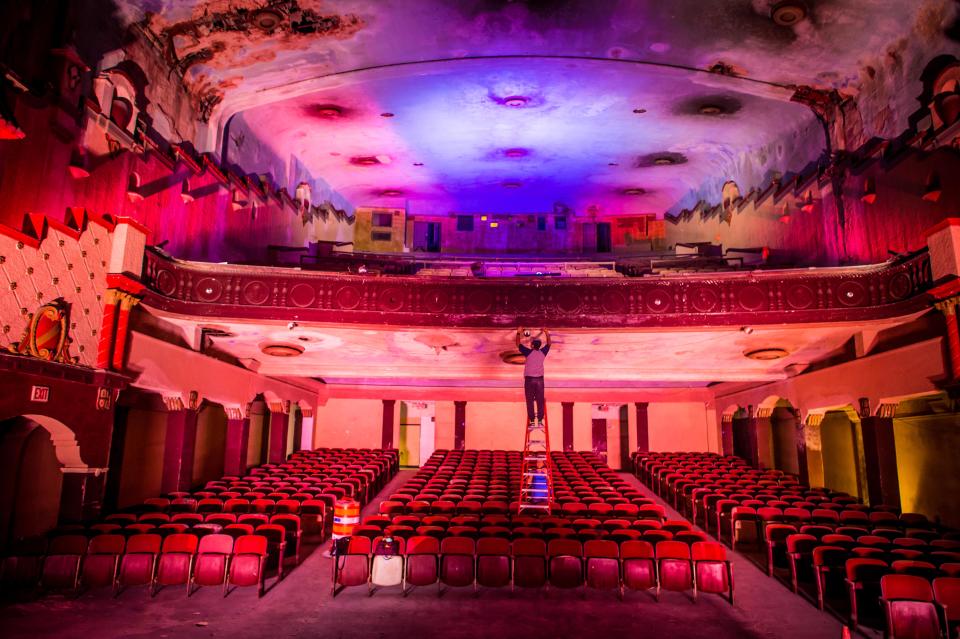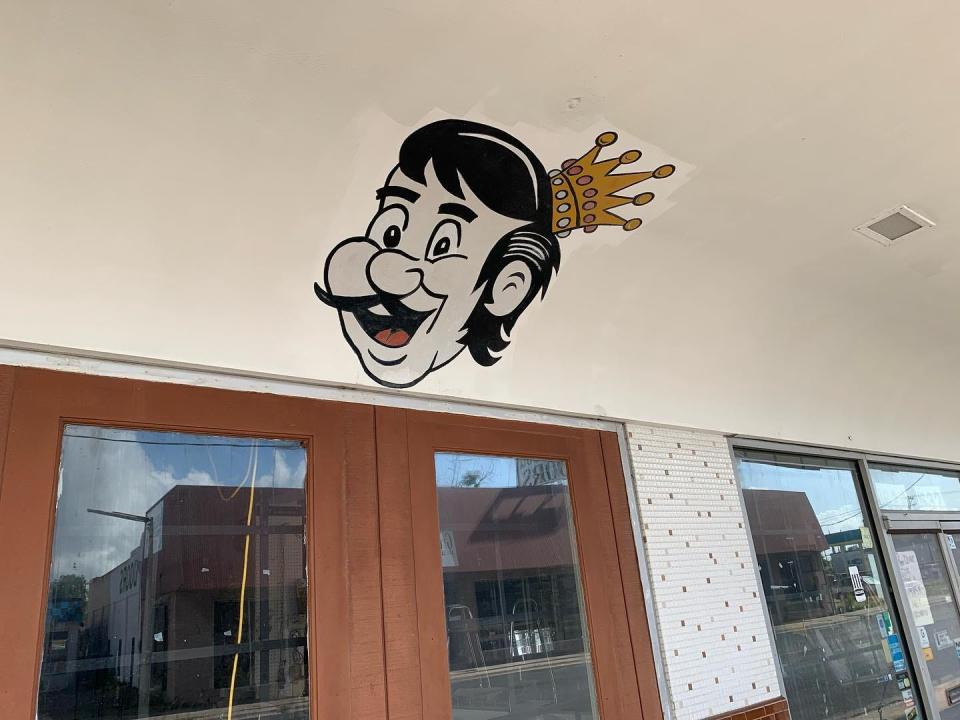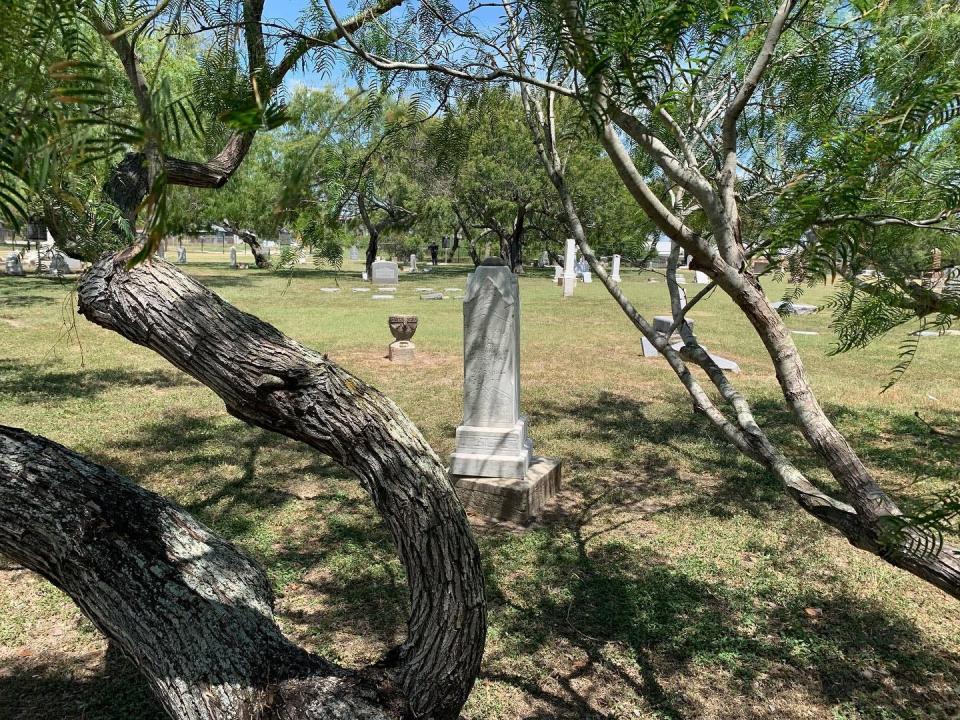Here are 10 reasons why Corpus Christi is the most promising city in Texas
CORPUS CHRISTI — Right now, the most exciting city in Texas is Corpus Christi.
For the same reason that this South Texas metro of 400,000 citizens has been periodically praised over the course of more than 180 years.
Because of its future.
That is not a back-handed compliment.
Wandering the streets of downtown during a recent four-day stay, my road-trip buddy and I registered repeated surprise at the changes to this former no-go zone: Excellent but unstuffy and reasonably priced eateries; clubs that offered varied entertainment late into the evening; and, especially on weekend nights, the miracle of street life spilling out from the compact central district and onto the immaculate shoreline and nearby T-head jetties and beaches.
If Galveston's urban front along the Gulf of Mexico feels a bit overdeveloped these days, Corpus Christi's shoreline on the bay is just coming into its own organically.
For decades, locals and other Texans have regretted the city's delayed, muddled or canceled civic projects; its apparent disinterest in encouraging human-scaled activities under its hulking bank towers; and its neglect or outright demolition of the Mexican American West Side — alternately rendered Westside — and the African American North Side.
Yet these days, Corpus Christi feels more fresh, more open, more confident than in the past.
"I'm more hopeful all the time," says Monica Sawyer, a grassroots civic leader who is making progress in an effort to resurrect downtown's 1929 Ritz Theatre. "The mix of crowds downtown has been incredibly encouraging."
For this, the first of two columns about our trip to the Corpus Christi area, allow me to list 10 things that should make anyone feel buoyant about the city's near future.
1. The lights are much brighter there
Without a doubt, the current groundswell of downtown activity — and to a much lesser extent, similar enterprises uptown, a district located on the low bluff above the shoreline — is the best news from Corpus Christi in years.
It didn't start yesterday, or even during the last few decades. Yet now, people of different backgrounds mix easily as they dip into one place, then sample another. Inevitably, they are drawn to the water and the city's gorgeously curving Shoreline Boulevard and Ocean Drive.

One Corpus Christi native told me that, for a long time, she was not allowed to go downtown. Breaking that taboo is huge step for any American city, especially one that has struggled with the outflow of young talent as Corpus has for so long.
2. Sailing the SEA District
Although this cluster of sports, entertainment and arts (SEA) bears the imprint of a giant and sometimes mismanaged civic project, some of its elements just keep getting better.
For instance, the Art Museum of South Texas has blossomed inside a terrific 1972 building, designed by architect Philip Johnson, that is a playground of light and bay views. It has grown physically and culturally. The exhibits now on display follow either thoughtful thematic patterns, or employ the museum's increasingly admirable permanent collection, which includes Texas artists such as Tré Arenz, Melissa Miller, Keith Carter, Michael Tracy and James Surls.
Also in this district find the Whataburger Field for the Corpus Christi Hooks baseball team, a shiny convention center (without an attendant hotel), the venerable Harbor Playhouse, and a science and history museum that looks geared to younger audiences.
The puzzlingly named Texas State Museum of Asian Cultures is built around the eccentric collection of the late, larger-than-life Billie Trimble Chandler, a teacher whose story is told at Texas Archive of the Moving Image.
Avert your eyes from the district's water park without water, and its heritage district that denies easy public access into the historic buildings or into their deeper stories.
At its core, however, the SEA District does its civic job and can be reached by foot from downtown.
3. Raising up the Ritz
A fateful bicycle ride through downtown led Monica Sawyer to the empty Ritz Theatre, built in 1929 for vaudeville acts, hence the high stage house, but opened as a movie theater. It later became a music hall, first for Texas acts, then heavy metal.
Sawyer adopted the place and envisions a broader role for the venue in the community. Her nonprofit now owns the theater that was built in the "atmospheric style," with 3-dimensional architectural elements inside the house, and a painted sky ceiling, like the contemporaneous Majestic theaters in San Antonio and Dallas, although on a smaller scale.

Our Think, Texas road trip to Corpus Christi just got bigger. : Too big for one visit.
Recently, her team has been able to stabilize the sturdy structure with a new roof. It still looks raw inside, but Sawyer estimates $15 million would make it presentable and inviting.
"There's been a shift within the community to loving downtown again and the results can be seen," Sawyer says. "This only means good things for The Ritz’s future."
4. Enduring cultures
The West Side area of Corpus developed a rich Hispanic culture despite neglect from leaders of downtown businesses, the port and its industries, or the big military presence here. That has allowed treasures such as the 1950 moderne Galvan Ballroom, the Selena shrine at the Hi Ho eatery, and the Selena Museum to reflect that culture.

The challenge will be to protect and preserve those communities if and when a revived downtown and uptown stretch west. (East Austin and South Austin send you an urgent message: Start now.) Already some interstitial neighborhoods in the central city are seeing slow but noticeable changes.
The African American North Side has been less fortunate. We walked around the neighborhood that includes Solomon Coles High School, Holy Cross Catholic Church and Old Bayview Cemetery, all sites of historical import. Yet the city's Black communities have been split up and fractured by Interstate 37 as well as the original Harbor Bridge and the new, incomplete Harbor Bridge.
I must explore more of this history the next time I'm in Corpus.

5. Everybody to the beach!
Many of my happiest memories of childhood visits to Corpus include quick trips to North Beach on the bay, or out the causeway to the more distant Padre Island on the Gulf. Next to downtown, one finds jetties, piers, parks, beaches and marinas that invite relaxation day and night. Port Aransas, too, is just up the coast.
In addition, North Beach is home to two big attractions. We skipped the U.S.S. Lexington — an enormous aircraft carrier — this time, but returned to the Texas State Aquarium, which far exceeded my memories of the place.
Texas history, delivered to your inbox
Click to sign up for Think, Texas, a newsletter delivered every Tuesday
Instructive and pleasurable for adults and children, it offers multiple underwater views of Gulf of Mexico and Caribbean ecologies. It also includes a walk-through jungle aflutter with birds and scalloped enclosures for other plants and animals.
The day we visited, crowds flocked to the big pool for a show of trained sea mammals, but we moved on quickly. That kind of display grows old quickly.
I've visited some of the great aquariums of the world and must admit that Texas' entry holds it own.
6. Pockets of deep history
I talked to journalists, teachers, waiters, clerks and museum guides during my four days in the Corpus Christi area. Almost all agreed that the city historically has cared little for its past, and not much more about its future. Stasis ruled.
That seems to be changing.
More: Texas road trip: Tell us what to see, do and eat in Corpus Christi, and anywhere nearby
History pops up all over the place. The first spot we visited in Corpus was the old Temple Beth El, built by the city's Jewish community in 1937; later we peeked into the Hebrew Rest Cemetery that was donated by rancher Richard King because Jews were traveling 140 miles away to Gonzales to bury their dead. The Lichtenstein family of merchants — who employed my family at their department store for decades — is associated with both spots.
We found history at the enormous Corpus Christi Cathedral, which, by luck, we visited during vespers for the Feast of Corpus Christi.
Yet the places where we found the most history were at two cemeteries, including Old Bayview, laid out in 1845 and the oldest federal military graveyard in the state.

It honors veterans of the Texas Revolution, Mexican War, Civil War and Spanish-American War. It could use more onsite interpretive material, but Texas historical markers are plentiful. It is usually open 7 a.m. to 7 p.m.
Near the end of Ocean Drive, find the Seaside Memorial, which not only contains the fenced grave of Selena — another site devoted to the late Tejano singer — but also the flat headstones of my paternal grandparents.
It was good to be reminded that my grandfather, Evelyn William Barnes, was born 142 years ago in 1880, during the presidency of Rutherford B. Hayes and the Texas governorship of Oran M. Roberts. At the time, he was in Kent County, U.K., during the reign of Queen Victoria.
7. School days
What makes modern Texas cities prosper? Among other things, great schools, colleges and universities. Perhaps nothing predicts a brighter future for this city than the Texas A&M Corpus Christi campus, located on an island near the end of Ocean Drive. Except for a few old, military-looking classroom buildings, it is all newish and brimming with potential.
We also toured the campus of Del Mar College, which is even more focused on the local needs of the city. It has experienced some rapid and handsome expansion. The original art deco 1945 main building — which my father attended soon after it opened — was locked up and empty when we visited, but we were assured that a thoughtful renovation is on its way.
8. Bring on the entrepreneurs
Corpus has relied on big projects — the port, refineries, a convention center, the bay front with its low sea wall, harbor bridges, military bases — to pave the way to its intended future.
The next chapter belongs to the entrepreneurs and the nonprofits.
Folks such as the Lomax family, whose projects include Water Street Market, Water Street Oyster Bar, Executive Surf Club, Sushi Room, Texas Surf Museum and BUS (Bar Under the Sun) that took over a former Greyhound Bus Station. Don't forget this restaurant group's wonderful Mediterranean café, Elizabeth's, inside the art museum with its priceless views.
More:Corpus Christi's Suter Wildlife Refuge holds ancient history and vital ecosystem
Think also of Sawyer and her nonprofit Ritz Theatre project. That could be transformative. Ask anyone who remembers the 1970s in Austin, when the Paramount Theatre was the only place open on Congress Avenue in a hollowed-out downtown on weekend nights.
The city should make it easier for folks like Sawyer and the Lomax family to rebuild, thoughtfully and sensitively, parts of downtown, Ocean Drive, uptown and near-in neighborhoods. Also ripe for careful redevelopment: the postwar strip shopping centers along Alameda Street that seem primed for even more progressive ventures.
9. Selena: A shining light
There's been no one like her before or since. She inspires Tejanas and Tejanos as well as other young people to this day, a fact confirmed at various monuments to the singer around the city. Fans respectfully flock to them, especially the Selena Memorial on Shoreline. This is the kind of grassroots history and culture upon which a city can build.
10. More land to come
When the old Harbor Bridge comes down, the massive supports for that gigantic truss structure will go away, and many acres of land will open up on both ends of the causeway.
While the problems generated by the newer bridge don't belong in this column, the promise of acres and acres of wisely developed land so close to downtown is alluring.
The city should resist, however, expensive, oversized projects that are not walkable or affordable. Turn loose the entrepreneurs and nonprofits. Make sure any new housing includes inclusive options. To start, how about an urban-scaled grocery store?
The time has come to stop referring to Corpus Christi as the city that never lived up to its natural potential, and rather to celebrate a city with limitless and absolutely unmistakable possibilities.
Michael Barnes writes about the people, places, culture and history of Austin and Texas. He can be reached at mbarnes@statesman.com.
This article originally appeared on Austin American-Statesman: 10 reasons why Corpus Christi is most promising city in Texas

